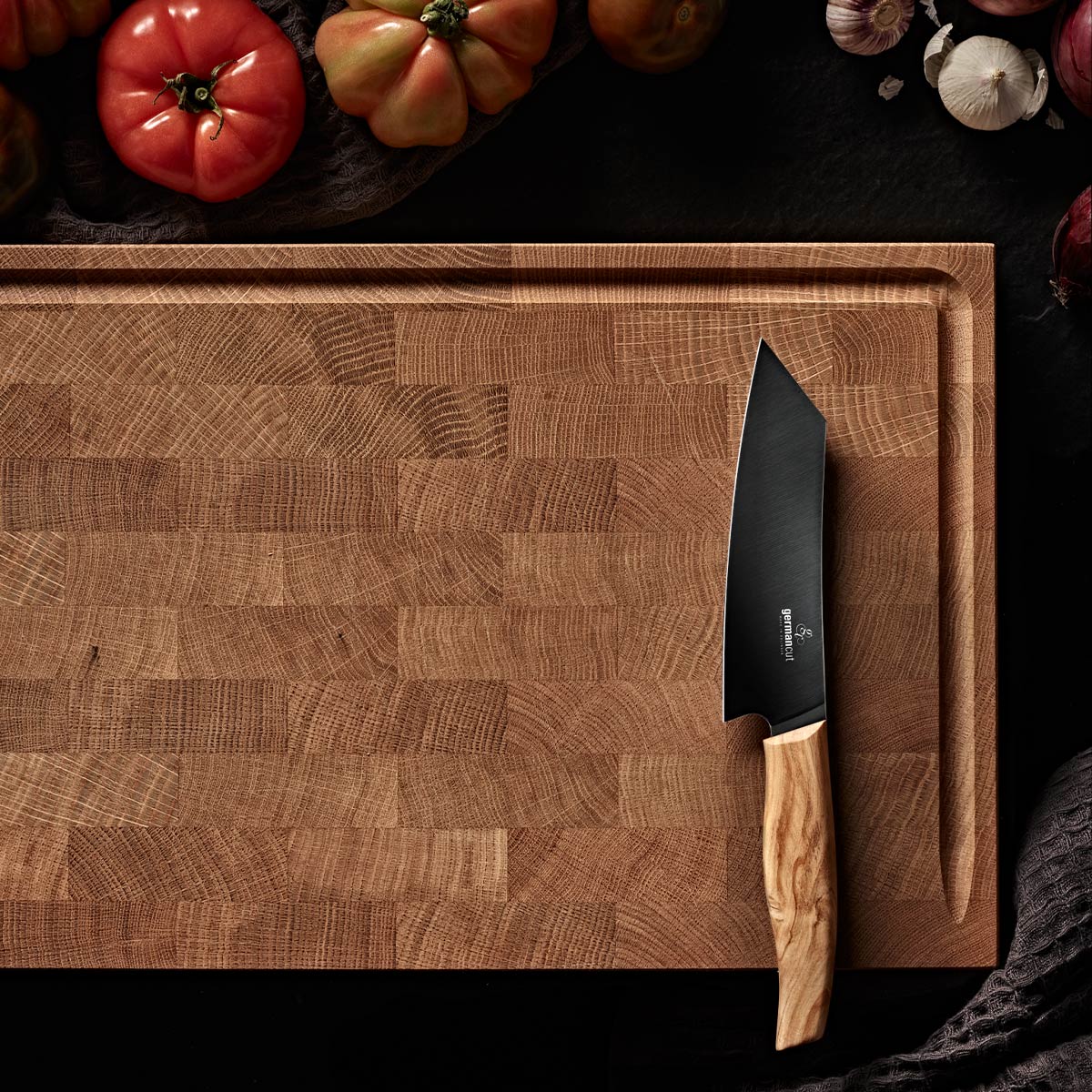
Which chopping board is
perfect for your chef’s knife?
An excellent chef’s knife always needs the right cutting surface – but which cutting board is actually the best?
Different chopping boards have different advantages and, of course, the choice of base also depends on the quality of the knife and the food to be processed.
Which chopping board do you prefer for working with your chef’s knife?
Do you have a favorite cutting board? And what material is it made of? Wood, glass, stone or plastic?
We will tell you whether it is really suitable for your chef’s knife or bread knife, because each material has different properties that are suitable for different applications – including chef’s knives.
Different materials for cutting boards
Glass and stone
Although glass and stone impress with their stylish appearance and hygiene, they quickly dull the blade of the chef’s knives used. This is because both stone and glass are very hard materials, which causes the blade of the chef’s knives to become blunt and the blade of the chef’s knives has to be sharpened more often. This means that your chef’s knives wear out much more quickly.
Plastic
The advantage of a plastic chopping board is that it can be easily cleaned in the dishwasher as it is not affected by water or its high temperature. It is therefore very hygienic and food colors, odors and flavors don’t stand a chance. For this reason, plastic cutting boards are particularly suitable for aromatic foods with coloring properties. However, plastic will also quickly dull your chef’s knives.
Wood
Wood is a beautiful, natural material that impresses with both its look and feel. But your knives in particular benefit from a wooden chopping board, as wood is very gentle on your chef’s knife blades.
The belief that wooden boards are not hygienic is not true either – although they are not dishwasher-safe as they swell up in hot water, they are easy to clean by hand. In addition, oak wood, for example, has a natural antibacterial effect.
The advantages of wooden boards outweigh the disadvantages – especially for chef’s knives
In summary, it can be said that wood has a clear advantage as a material for a chopping board – especially when high-quality chef’s knives are taken into account. Visually, it is an asset to any kitchen, its feel is first-class and as it has a natural antibacterial effect, it is ideal for processing food. However, the biggest advantage over glass, stone and plastic is that it is particularly gentle on the blade of your knives. So a wooden board is a winner, especially when it comes to your chef’s knives.
High-quality chef’s knives
The perfect cutting board for your high-quality chef’s knives
At Germancut you will not only find the perfect chef’s knives for your kitchen, but also the right accessories, such as a board and sharpening stone. Our new chopping board is made from oak wood, specifically end grain.
The terms end grain, end grain or head wood stand for the same type of wood processing. For the production of end grain and end grain, wood is not cut lengthwise to the trunk as usual, but crosswise to the trunk. It is then cut into cubes and placed next to each other so that the annual rings of the tree are visible from above. Cutting boards made from end grain are more resilient. They also remain attractive for longer, as cuts on the grain are less noticeable.
